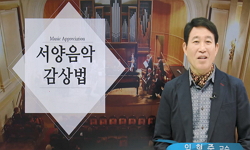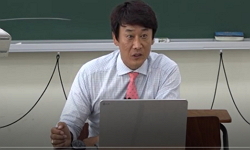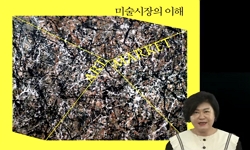The Mo-yu¨an hui-kuan (墨綠彙觀, preface. 1742) by An Ch´i (安岐:1683-after 1745) is a renowned catalogue of Chinese painting and calligraphy, that contains rare examples and provides a variety of information for extant works. An Ch´i was a w...
http://chineseinput.net/에서 pinyin(병음)방식으로 중국어를 변환할 수 있습니다.
변환된 중국어를 복사하여 사용하시면 됩니다.
- 中文 을 입력하시려면 zhongwen을 입력하시고 space를누르시면됩니다.
- 北京 을 입력하시려면 beijing을 입력하시고 space를 누르시면 됩니다.

『묵연휘관』을 통해 본 안기의 서화수장 활동 = The Mo-yuan hui-kuan An Chi`s Collection of Painting and Calligraphy
한글로보기https://www.riss.kr/link?id=A30051692
- 저자
- 발행기관
- 학술지명
- 권호사항
-
발행연도
2002
-
작성언어
-
- 주제어
-
KDC
900
-
등재정보
KCI등재
-
자료형태
학술저널
-
수록면
213-251(39쪽)
-
KCI 피인용횟수
4
- 제공처
-
0
상세조회 -
0
다운로드
부가정보
다국어 초록 (Multilingual Abstract)
The Mo-yu¨an hui-kuan (墨綠彙觀, preface. 1742) by An Ch´i (安岐:1683-after 1745) is a renowned catalogue of Chinese painting and calligraphy, that contains rare examples and provides a variety of information for extant works. An Ch´i was a wealthy Korean salt merchant and started his career as a collector and connoisseur in his early life. According to Hsiao Shih`s (蕭奭) Yung-hsien-lu (永憲錄), An Ch´i´s grand father and father were financially supported by Ming Ju(明珠:1635-1708), an influential politician under the K`ang-hsi emperor(r.1662-1722). Not only were they engaged in the salt business in Tien-jin and Yang-chou but also became the nouveau riche, even dominating other merchants` commercial places. During the first quarter of the eighteenth century An Ch´i could be one of the most important merchants in the Liang-hual(兩淮) area. Being naturally interested in painting, An Ch´i had occasionally written the catalogue during his life time and completed it in 1745 just before his death. In order to make it, he assiduously researched a good deal of relevant reference materials, comparing to many works he had seen before. It is reasonable that his important relationship with Chang Chao(張照: 1691-1745) and Wang Hui (왕휘: 1632-1717) made him cherish knowledge of traditional painting without any literate background. Given other catalogues published in the Ch`ing dynasty, the Mo-yu¨an hui-kuan shows a similar method in the light of entries; material, size, inscriptions, colophons, and seals. Despite its similar organization it has more meaningful information accounted in detail in this paper. All paintings and calligraphic works in this voluminous catalogue are chronologically arranged dating from the Chin till the Ming dynasties. Section three, chu¨an 3 includes the artists and their works through the centuries. Since he considered a number of paintings recorded in this section mostly were authentic, An Ch´i briefly described the technique, painting style, and subject matters rather than dealing with connoisseurship. He often referred to some critical comments on other connoisseurs` mistaken remarks or citations. He, however, avoided making any additional statement about works he had never examined. As opposed to chu¨an 3, chu¨an 4 is merely dedicated to album leaves(帖) that contained works by several artists under the same title. Although An Ch´i´s commentary is not much longer than that in chu¨an 3, it is meaningful to note that he attempted to authenticate some examples handed down as the so-called genuine works by the earlier connoisseurs. In the case of re-attribution, he supported his suggestion with definite evidence. For example, Yen ching-t´u (煙景圖) was attributed to Kuo Hsi (郭熙: 1020-1074) by Tung Ch´i-ch´ang, An Ch´i carefully corrected Tung´s error after he found out Yang Shih-hsien´s (楊士賢: 12th ct.) signature on the painting. The astute comments found in such writings reveal his startling insight into connoisseurship. Other instances quoted in this paper present the vast information of the individual artists and their works as well as documentary sources of those still extant or now lost. It means many famous art works passed through his hands. His catalogue, Mo-yu¨an hui-kuan shows how a Korean-Chinese connoisseur was struggling to solve problems concerning date, removed seals, limited texts, and forgeries. His comprehensive research provided a standard from which connoisseurship in the later Ch´ing period could develop. Thus, it would not be exaggerated to say that An Ch´i occupied a key place as an eminent connoisseur-collector in the northern Yangze area of the eighteenth century China.
동일학술지(권/호) 다른 논문
-
- 명청사학회
- 하마시타다케시 ( Hamashita Takeshi )
- 2002
- KCI등재
-
- 명청사학회
- 李允碩
- 2002
- KCI등재
-
- 명청사학회
- 曺永憲
- 2002
- KCI등재
-
- 명청사학회
- 張志連
- 2002
- KCI등재
분석정보
인용정보 인용지수 설명보기
학술지 이력
| 연월일 | 이력구분 | 이력상세 | 등재구분 |
|---|---|---|---|
| 2027 | 평가예정 | 재인증평가 신청대상 (재인증) | |
| 2021-01-01 | 평가 | 등재학술지 유지 (재인증) |  |
| 2018-01-01 | 평가 | 등재학술지 유지 (등재유지) |  |
| 2015-01-01 | 평가 | 등재학술지 유지 (등재유지) |  |
| 2011-01-01 | 평가 | 등재학술지 유지 (등재유지) |  |
| 2009-01-01 | 평가 | 등재학술지 유지 (등재유지) |  |
| 2007-01-01 | 평가 | 등재학술지 유지 (등재유지) |  |
| 2004-01-01 | 평가 | 등재학술지 선정 (등재후보2차) |  |
| 2003-01-01 | 평가 | 등재후보 1차 PASS (등재후보1차) |  |
| 2001-07-01 | 평가 | 등재후보학술지 선정 (신규평가) |  |
학술지 인용정보
| 기준연도 | WOS-KCI 통합IF(2년) | KCIF(2년) | KCIF(3년) |
|---|---|---|---|
| 2016 | 1.76 | 1.76 | 1.35 |
| KCIF(4년) | KCIF(5년) | 중심성지수(3년) | 즉시성지수 |
| 1.17 | 0.99 | 1.779 | 0.14 |




 KCI
KCI KISS
KISS






